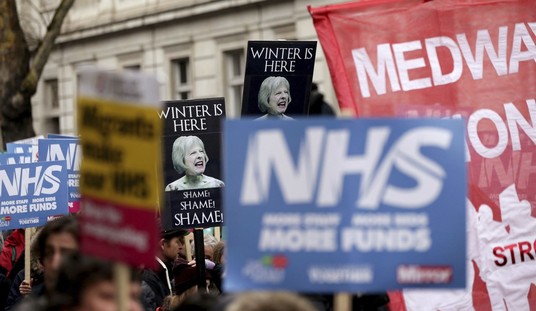We’re still seeing problems distributing the vaccine in some states but there is some genuine good news on the production front today. A House subcommittee on vaccinations held a hearing today and the President of Moderna and the Chief business Officer of Pfizer said there bill be a substantial increase in the delivery of vaccines by next month.
By the end of March, Pfizer and Moderna expect to have provided the U.S. government with a total of 220 million vaccine doses, up from the roughly 75 million shipped so far.
“We do believe we’re on track,” Moderna President Stephen Hoge said, outlining ways the company has ramped up production. “We think we’re at a very good spot.”…
Asked pointedly if they face shortages of raw materials, equipment or funding that would throw off those schedules, all of the manufacturers expressed confidence that they had enough supplies and had already addressed some of the early bottlenecks in production.
“At this point I can confirm we are not seeing any shortages of raw materials,” said Pfizer’s John Young.
Both Pfizer and Moderna said they are on track to deliver 300 million doses each by summer. Since both vaccines require two doses that means we’re on track to have enough doses for the entire country.
However, there’s more good news coming today from Johnson and Johnson. An FDA advisory committee will meet this Friday and vote on whether to recommend the FDA grant an Emergency Use Authorizations for J&J’s single shot vaccine. The FDA isn’t obligated to go along with the committee’s vote but in the case of the two previous vaccines, it granted the EUA one day after the advisory committee’s vote. That probably means the J&J vaccine will be approved this weekend and delivery of doses will start immediately:
Vaccine advisers to the US Food and Drug Administration will meet Friday to discuss whether to recommend Johnson & Johnson’s Covid-19 vaccine for emergency use authorization…
The Biden administration said last week that, if it is authorized, there are probably single-digit millions of doses available in coming weeks. On Tuesday, Johnson & Johnson’s Dr. Richard Nettles will say that the plan “is to begin shipping immediately upon emergency use authorization, and deliver enough single-doses by the end of March to enable the vaccination of more than 20 million Americans,” according to prepared remarks to be delivered before a House Committee on Energy & Commerce subcommittee.
All together that means by the end of March Pfizer and Moderna will have delivered enough vaccine for 110 million people (two doses each) and J&J will deliver enough for another 20 million people. If the states can up their delivery game we’ll be approaching half the population vaccinated in about five to six weeks. And if we can keep that going, we should be approaching herd immunity territory sometime in May. If you’d said that was possible a year ago, you’d have been labeled a lunatic.
There are a couple of wild cards here. The first is that states have to be able to keep up with the increase in available doses. Early on, some states like California have clearly struggled getting the doses they have into eligible people (the elderly, front line health workers, etc.). The other wild card is the variants. Evidence suggests they are not only more easily transmitted but also more deadly. The existing vaccines appear to be somewhat less effective against the South African variant in particular, which has already been identified in several states in the U.S.
Still, the overall picture is looking pretty good right now. If all goes well, we may actually be able to look forward to something like a normal summer. Even before we reach herd immunity, the number of cases and deaths should drop significantly. There’s light at the end of this tunnel and for once it seems it’s not a train coming at us.








Join the conversation as a VIP Member